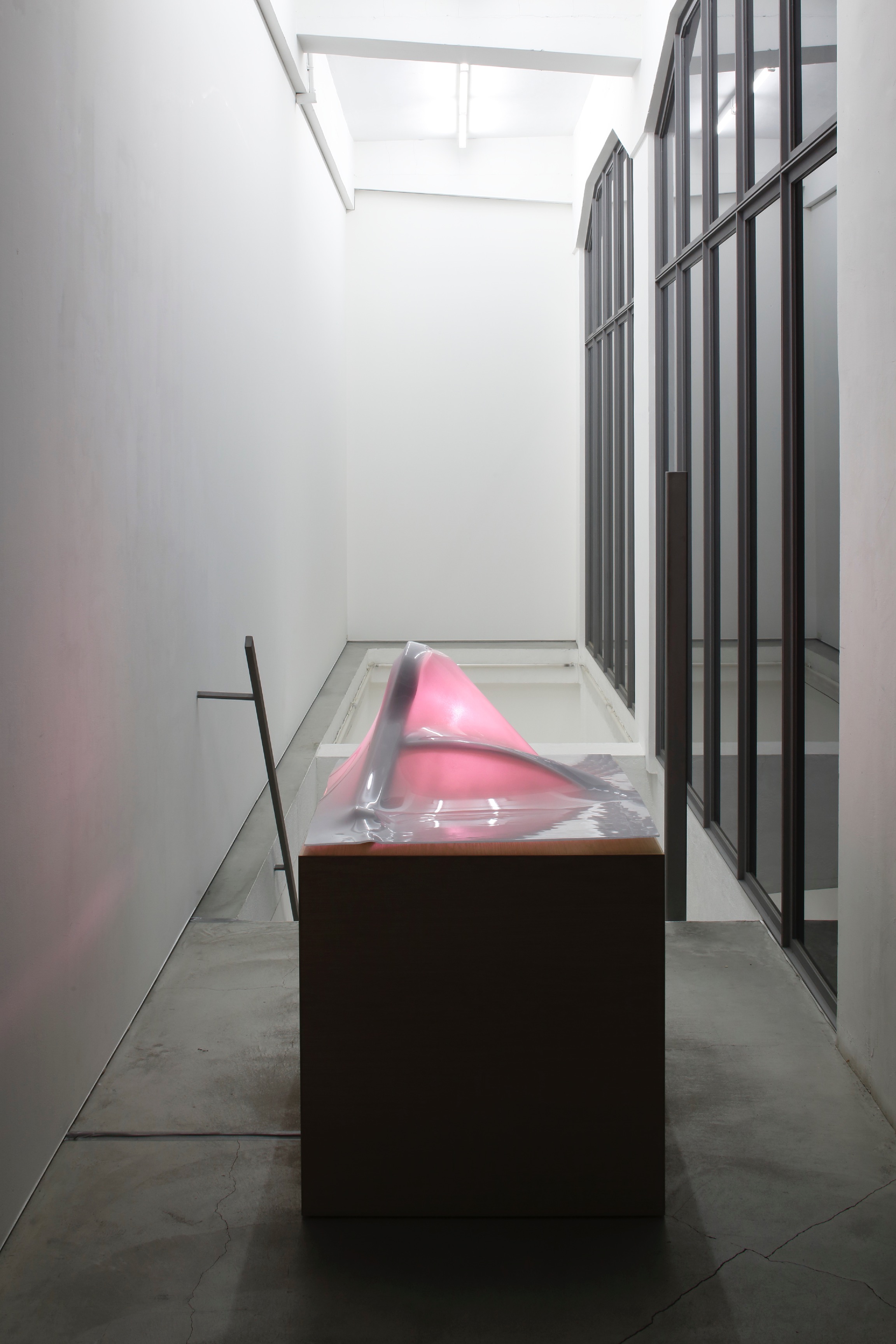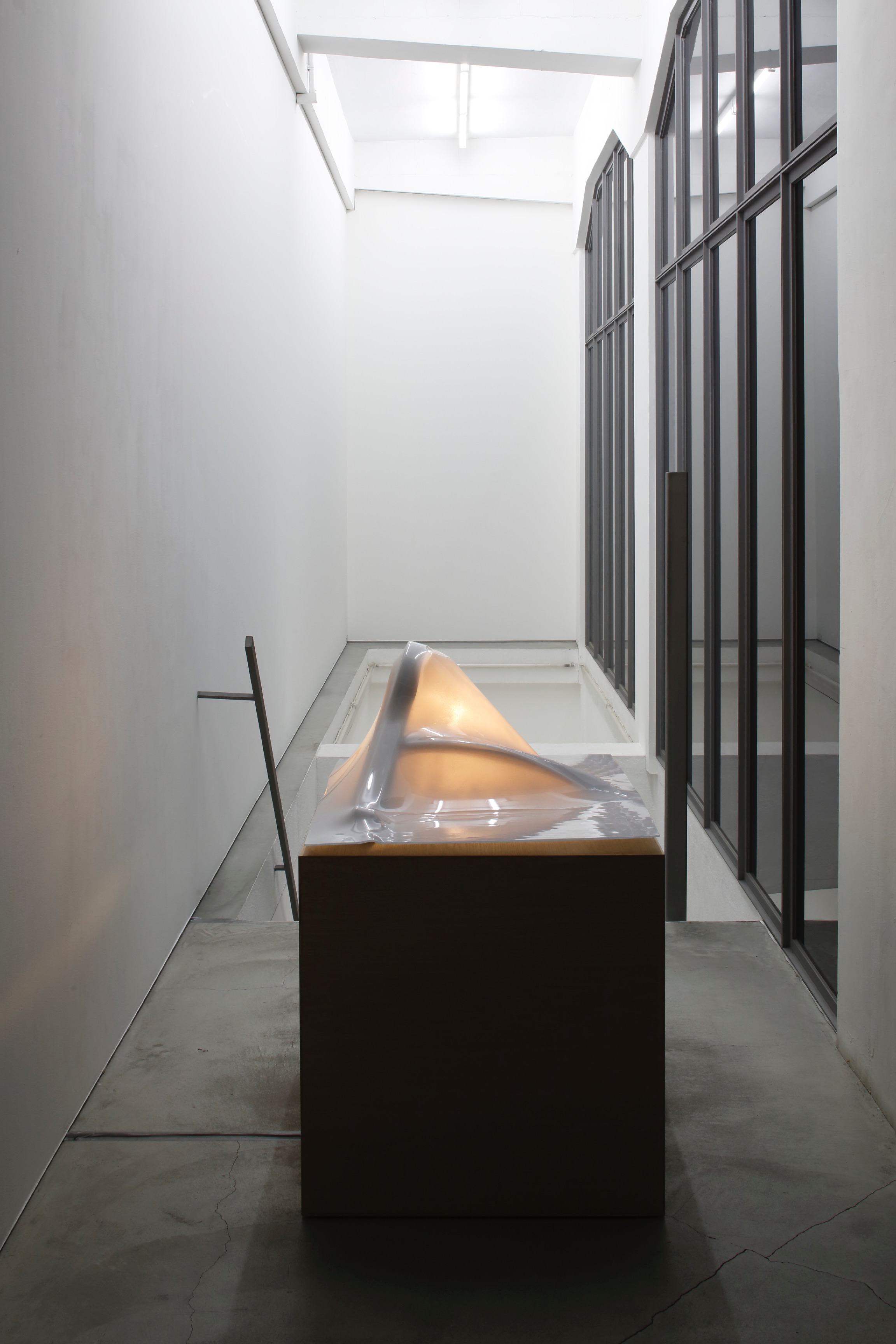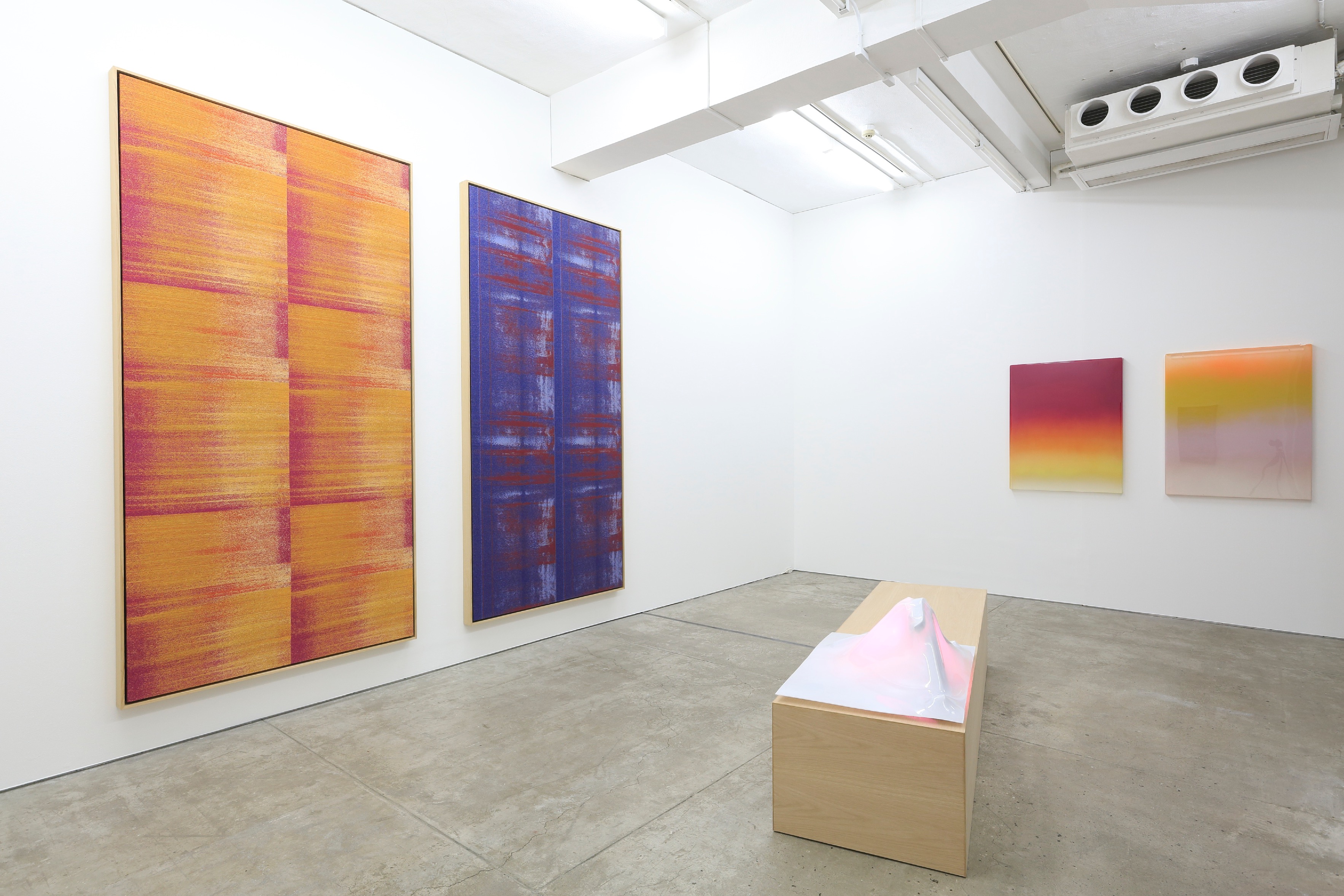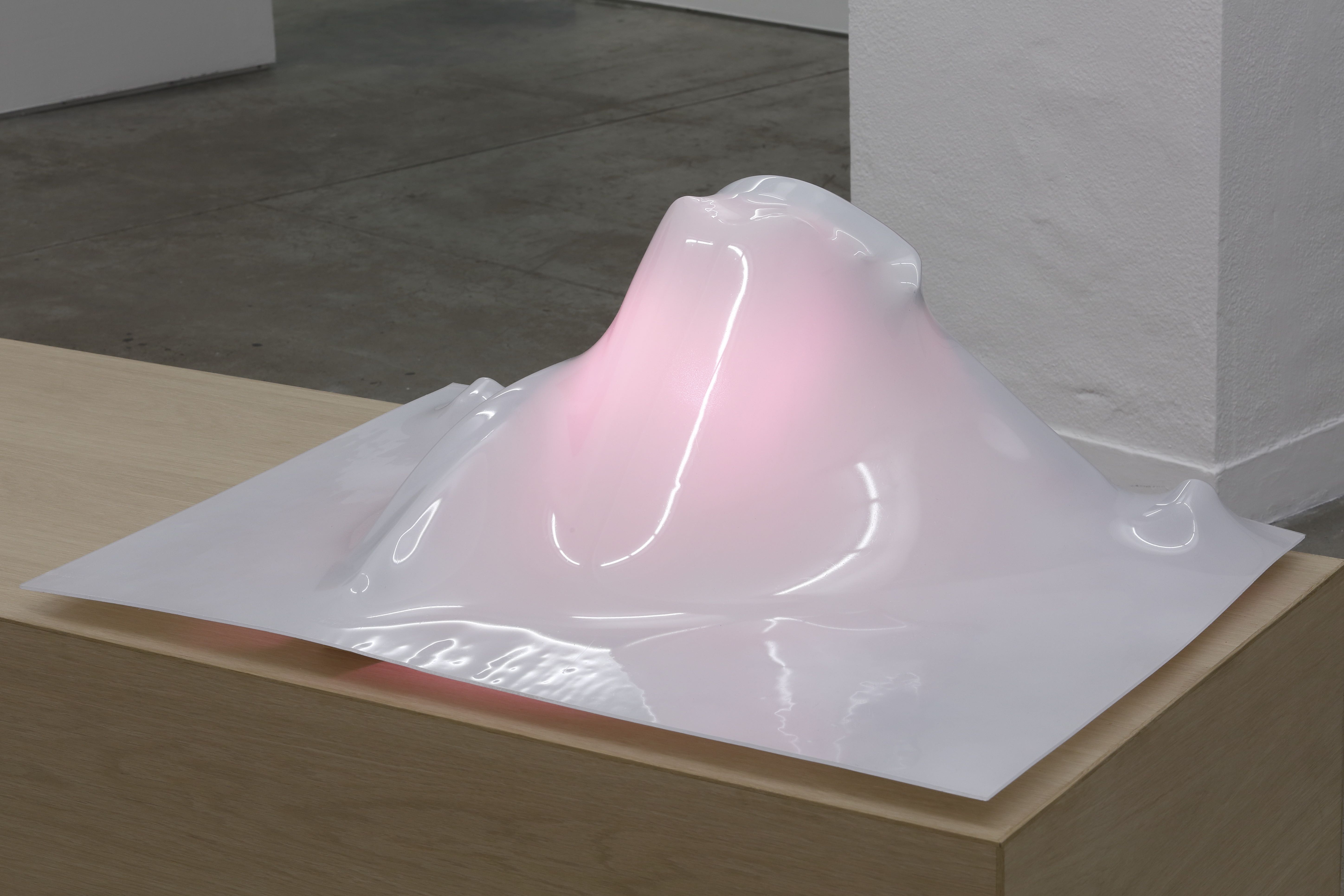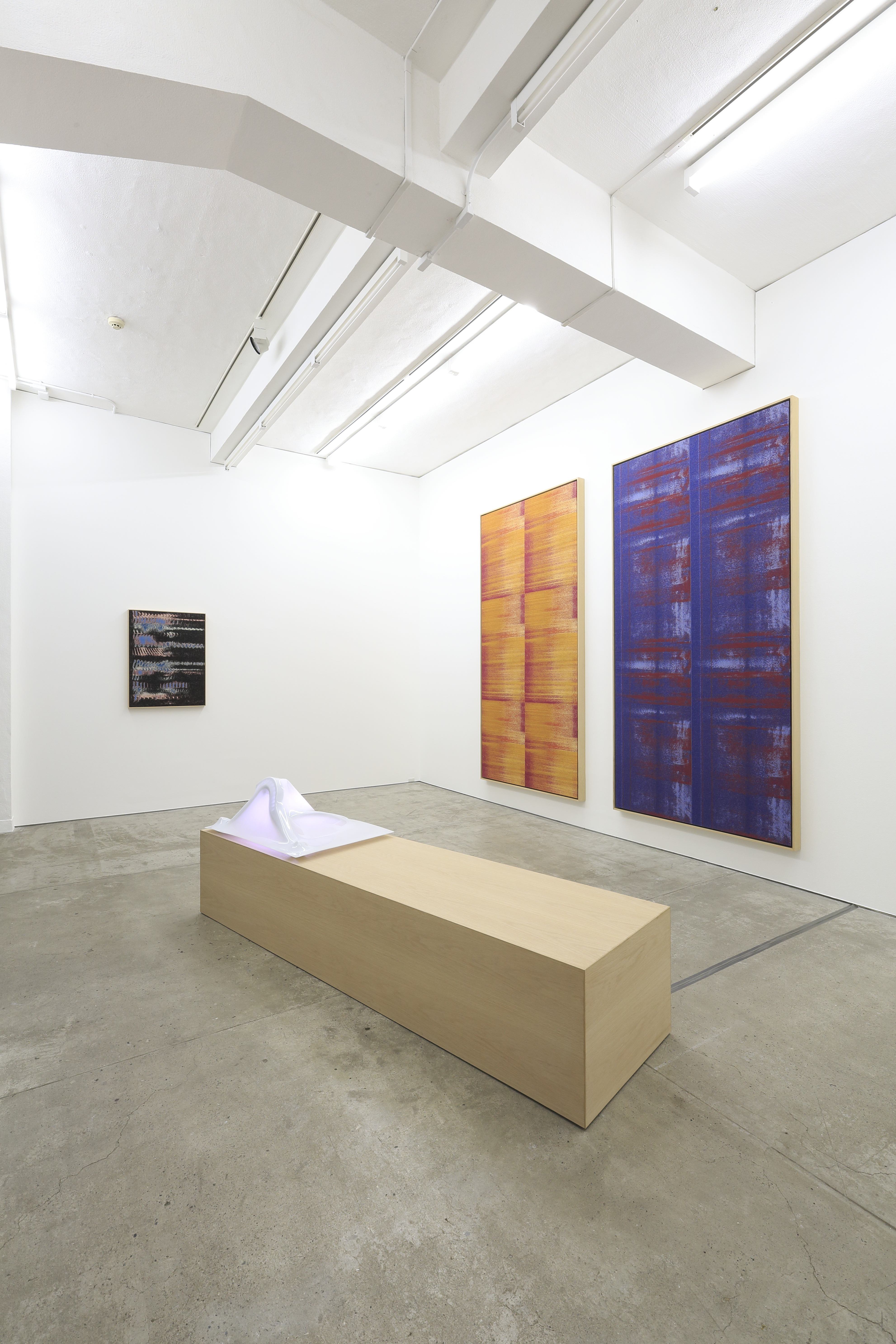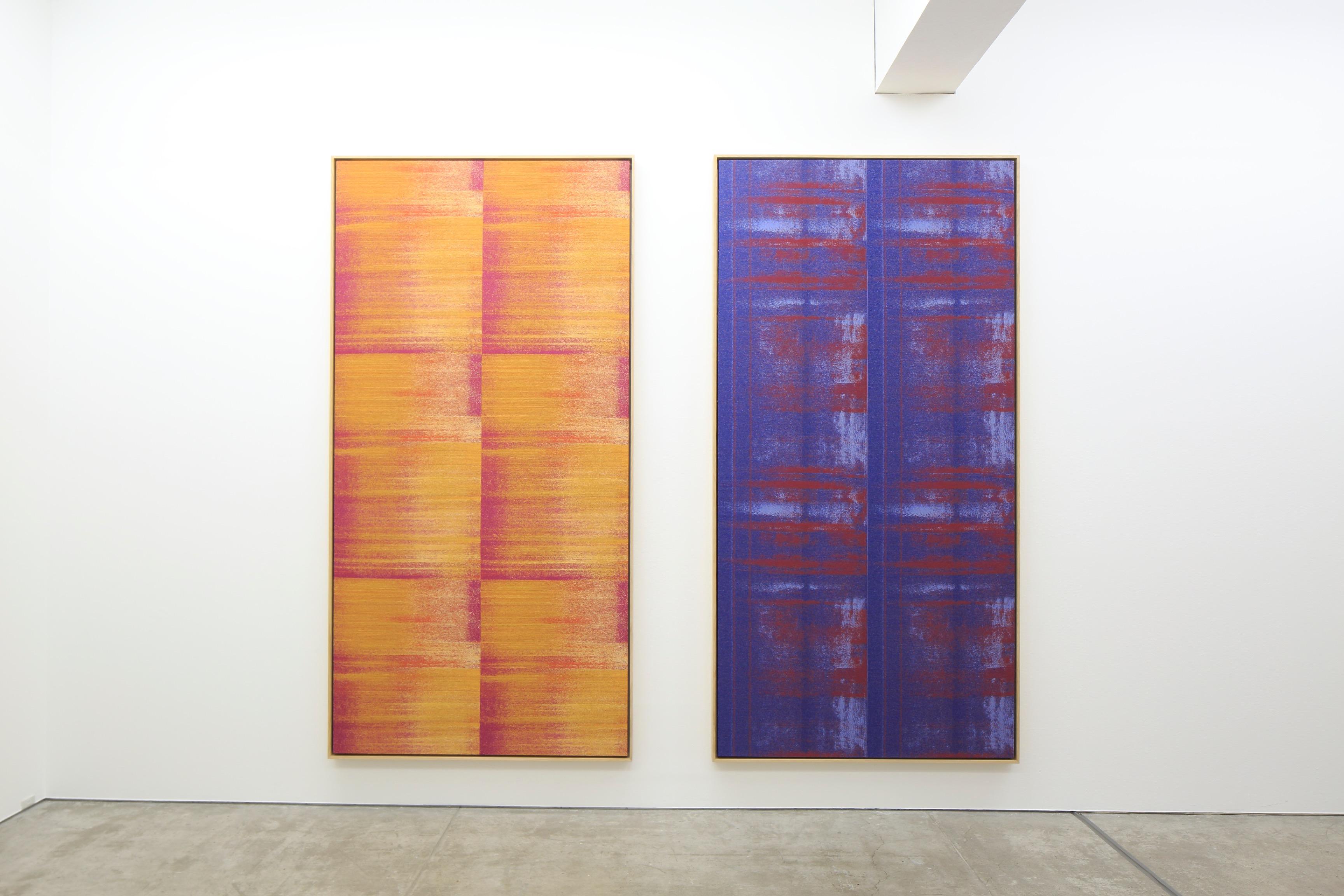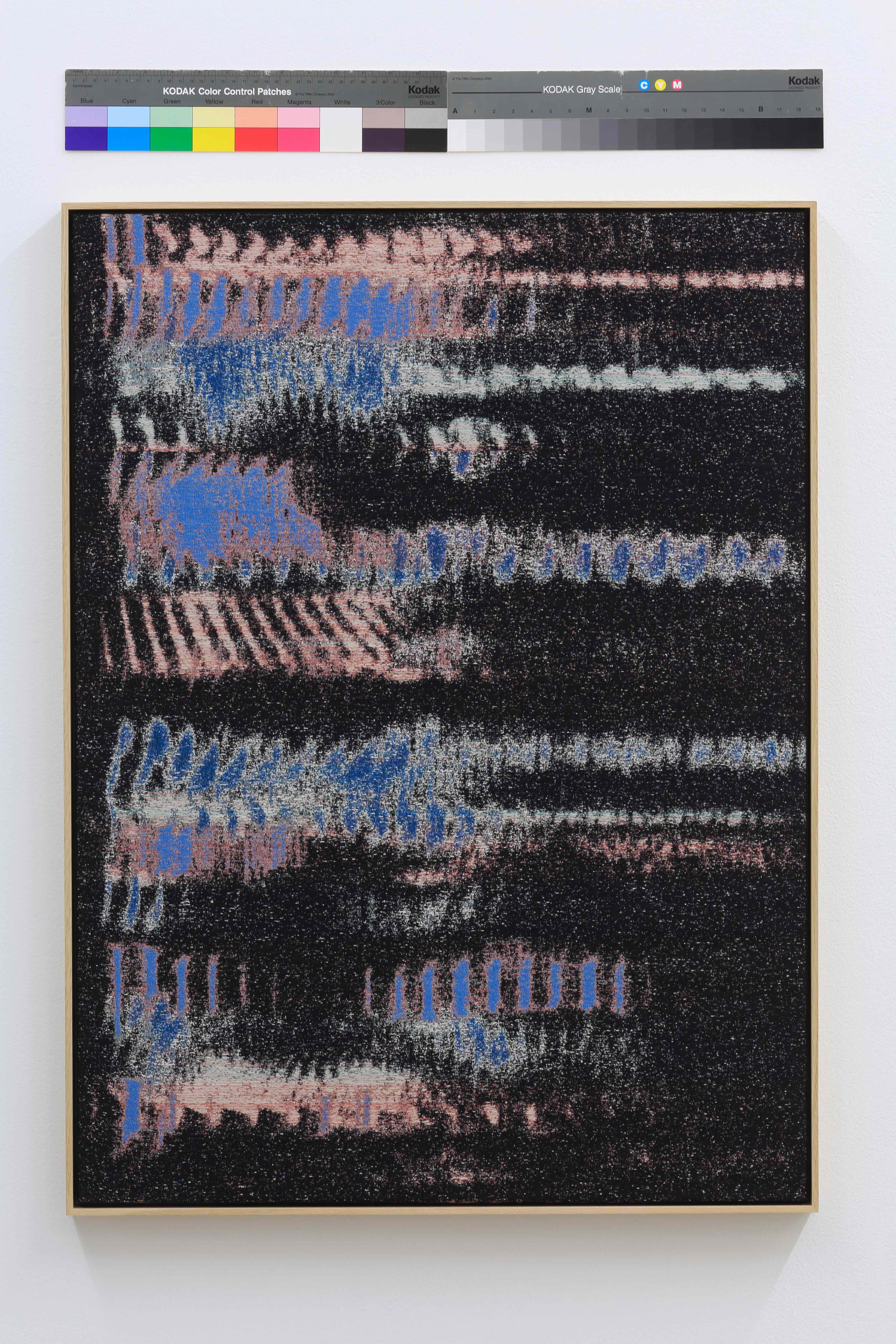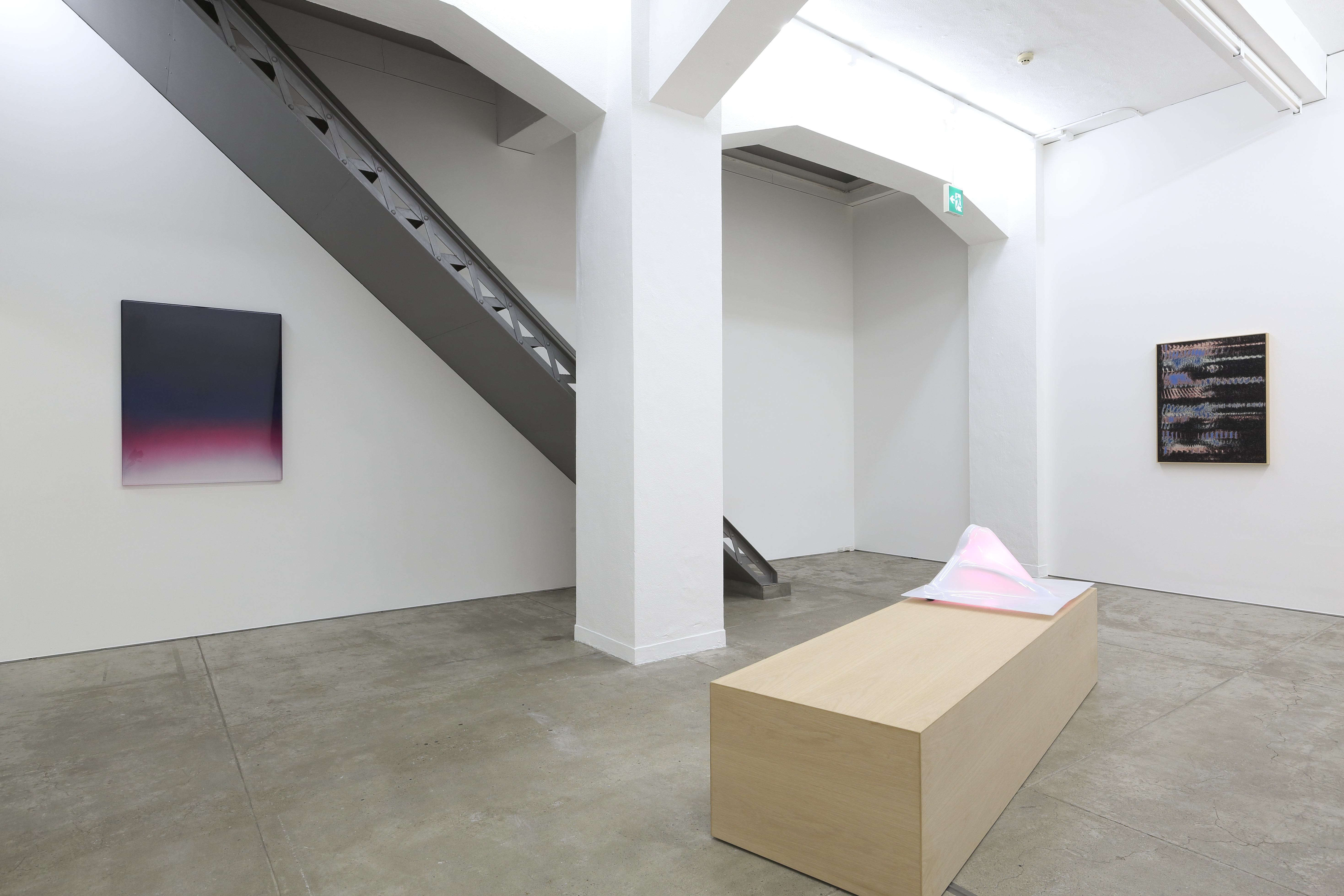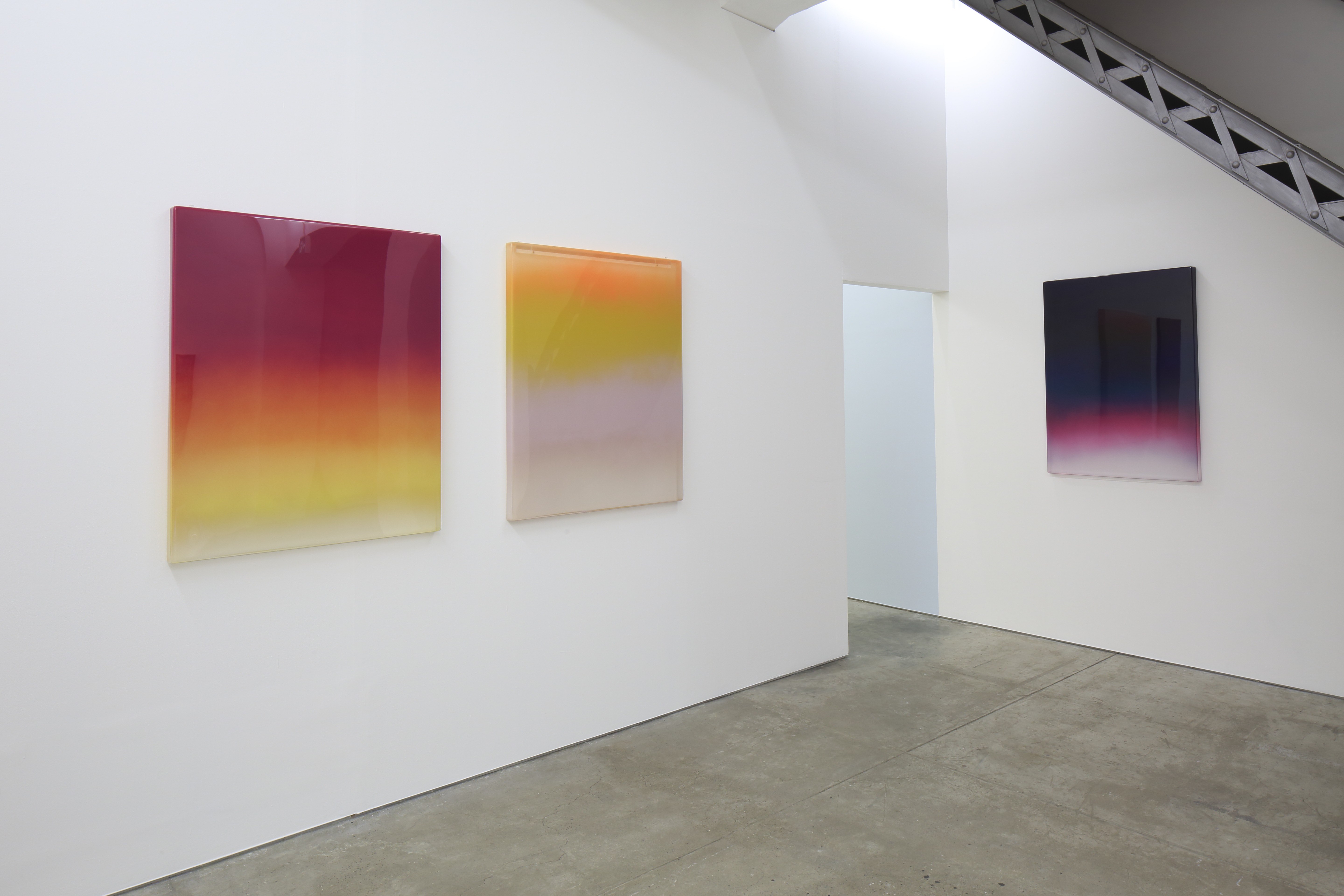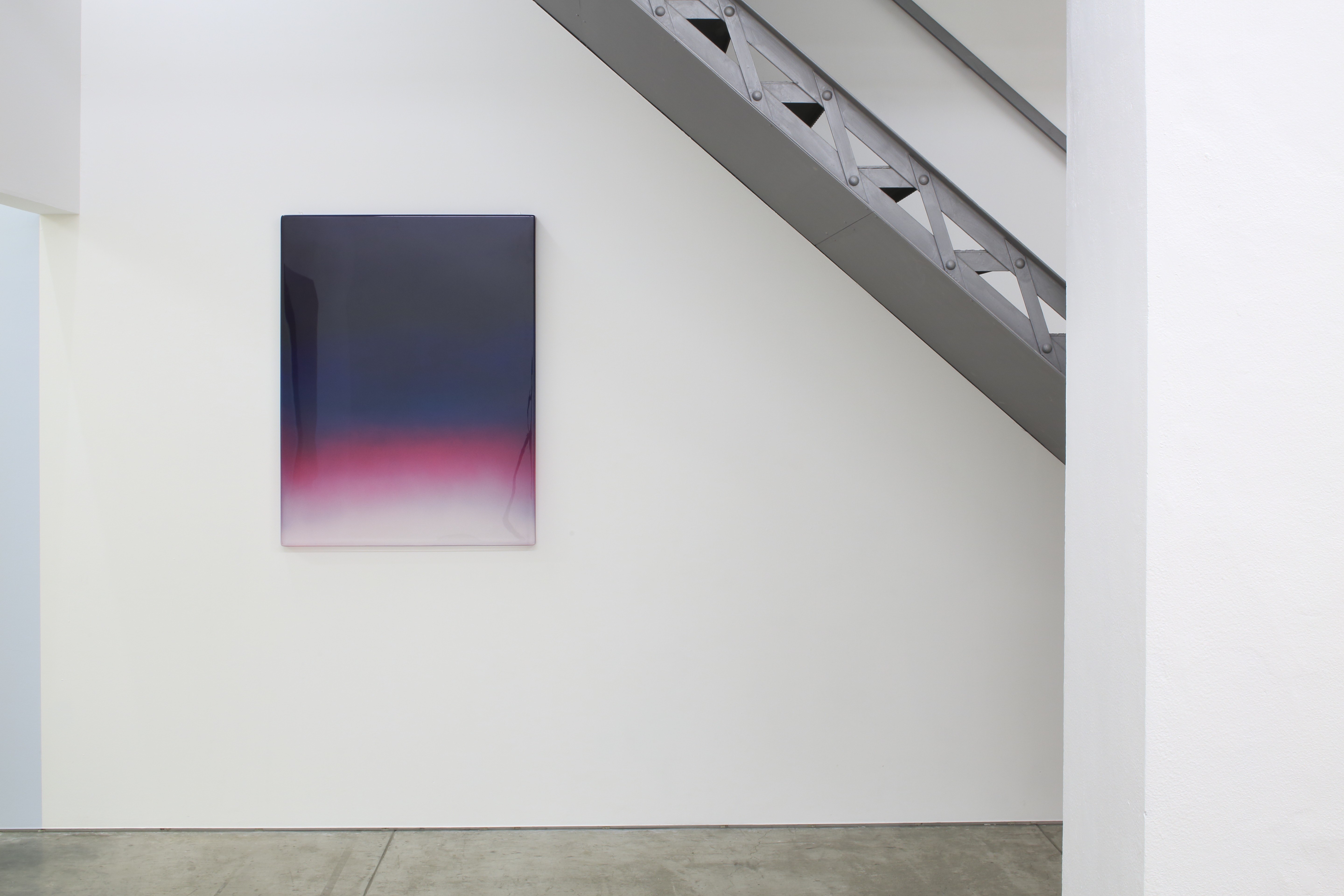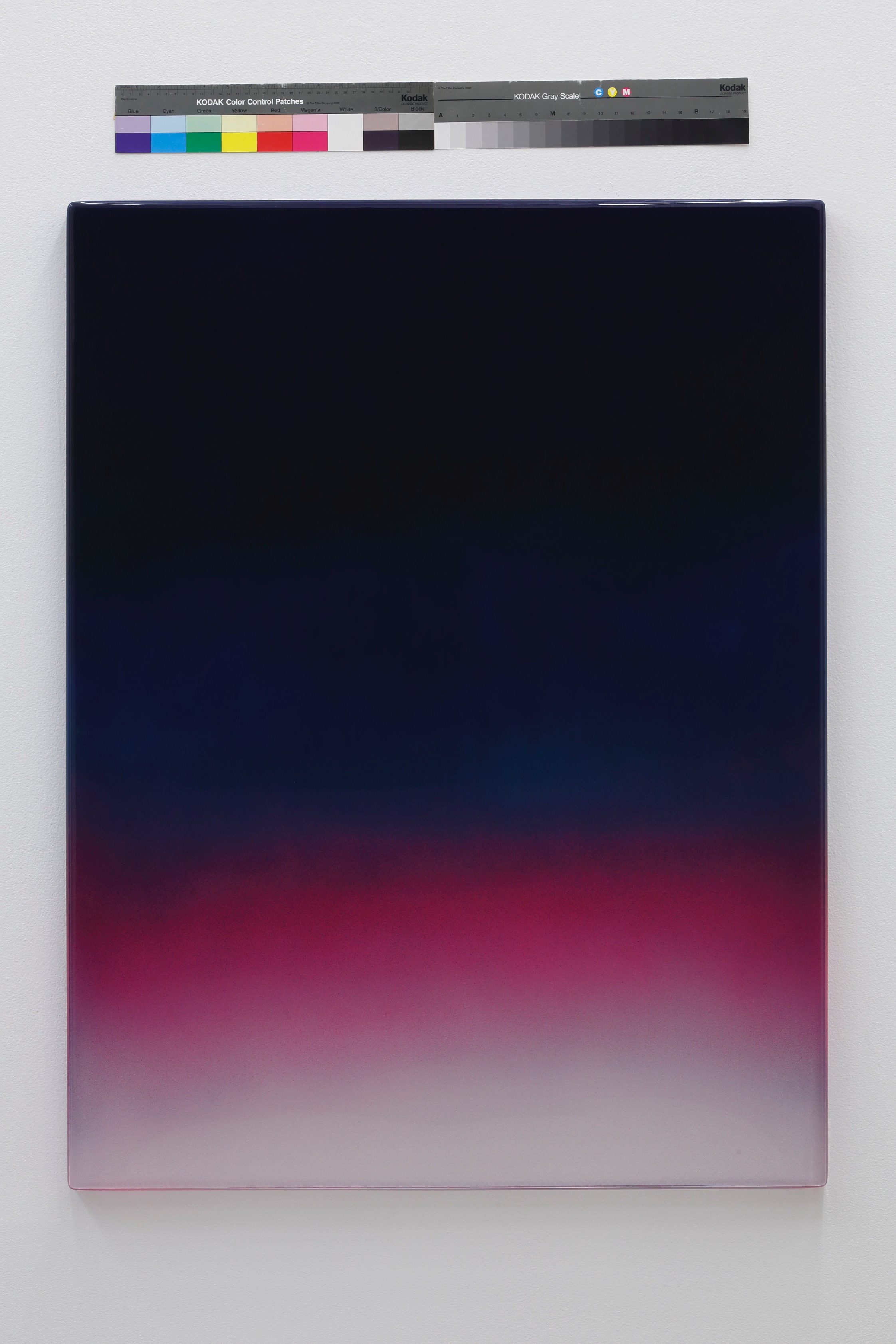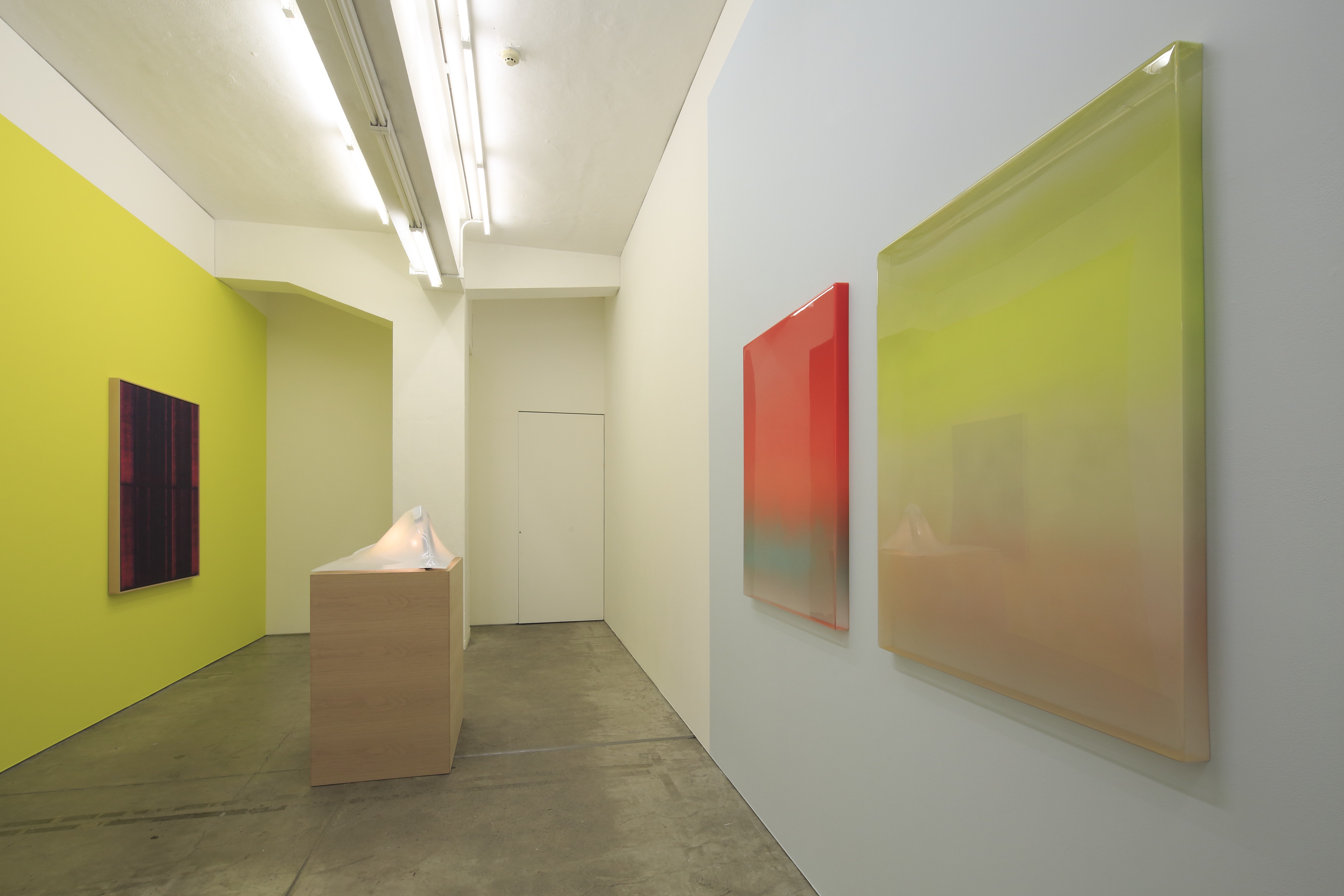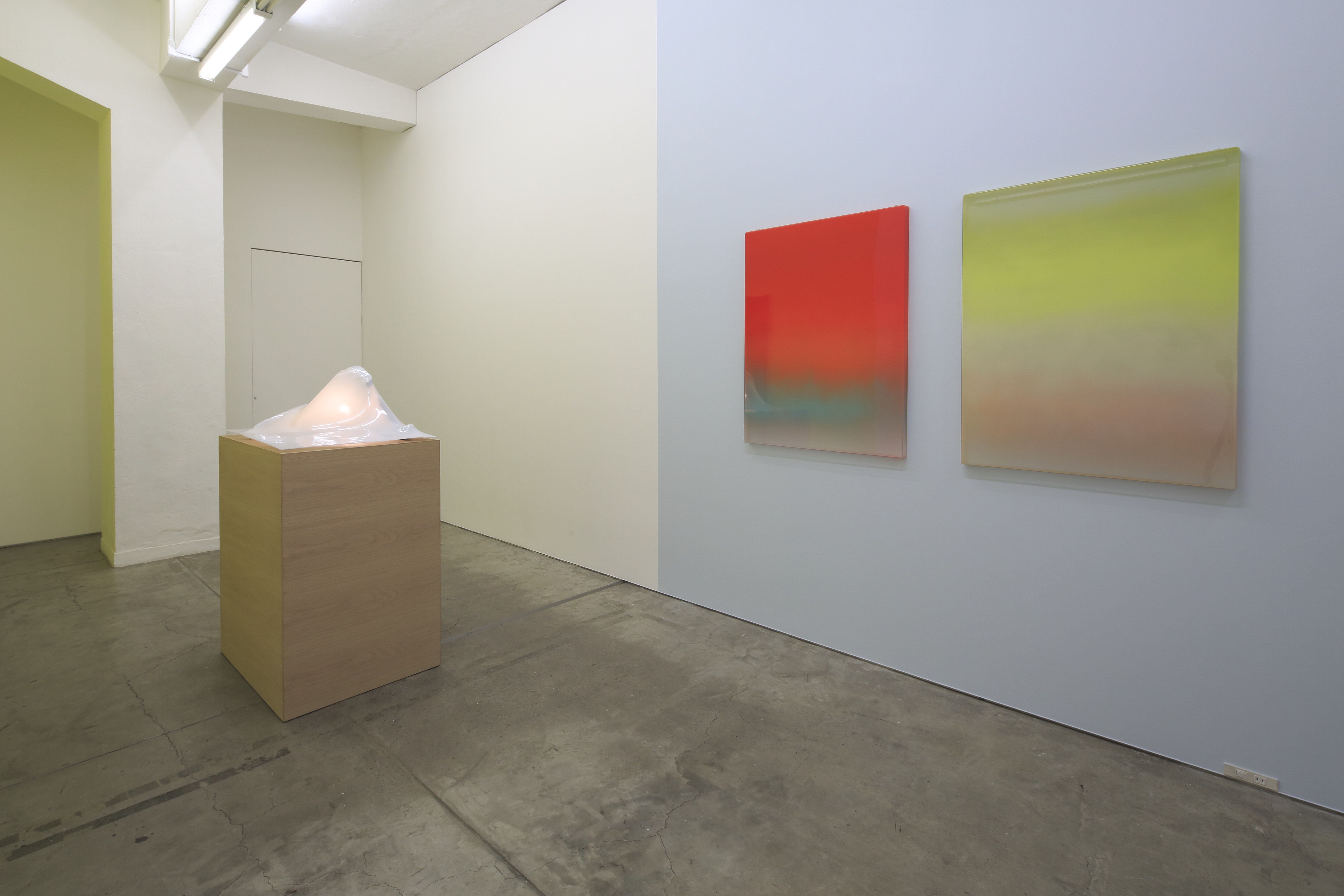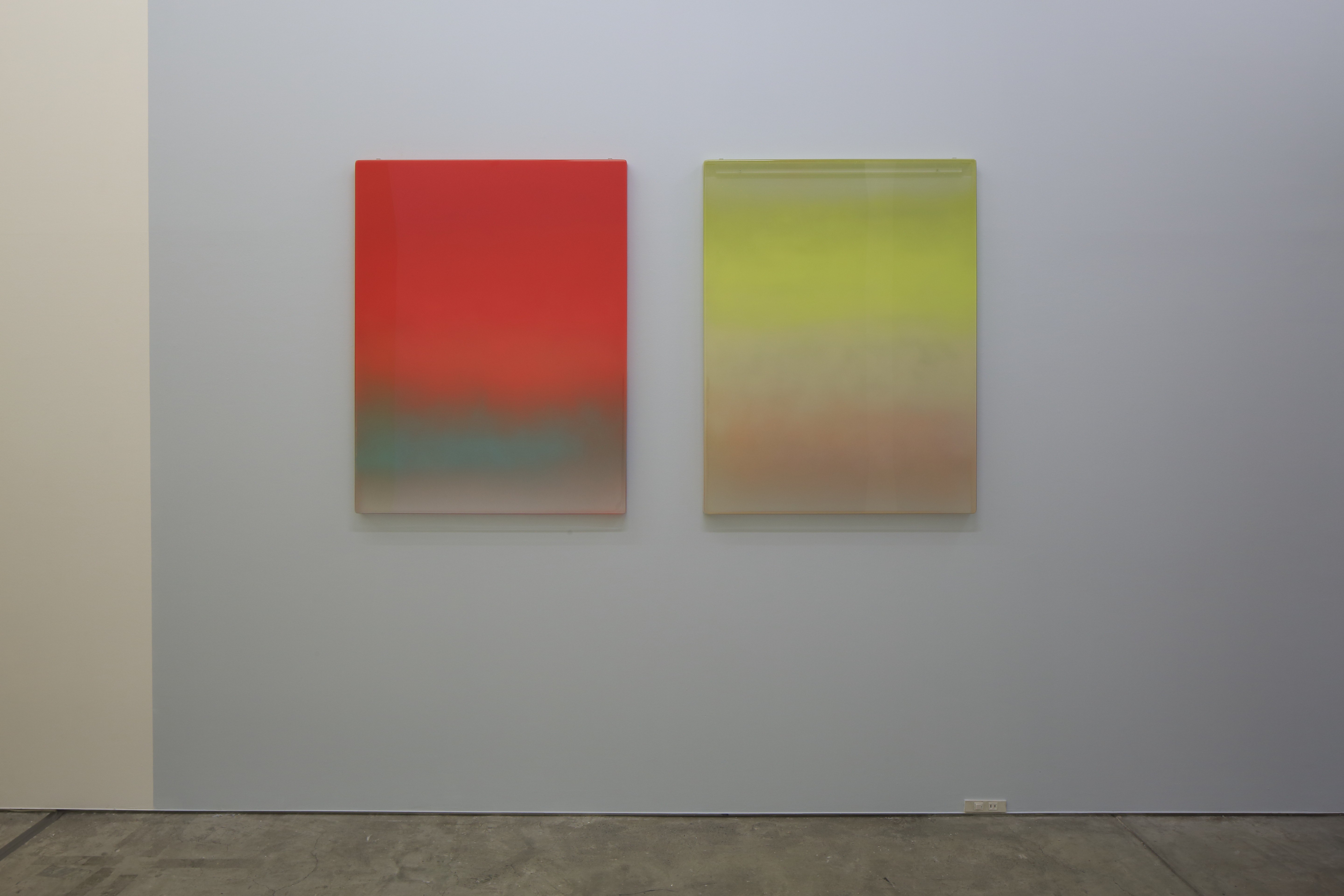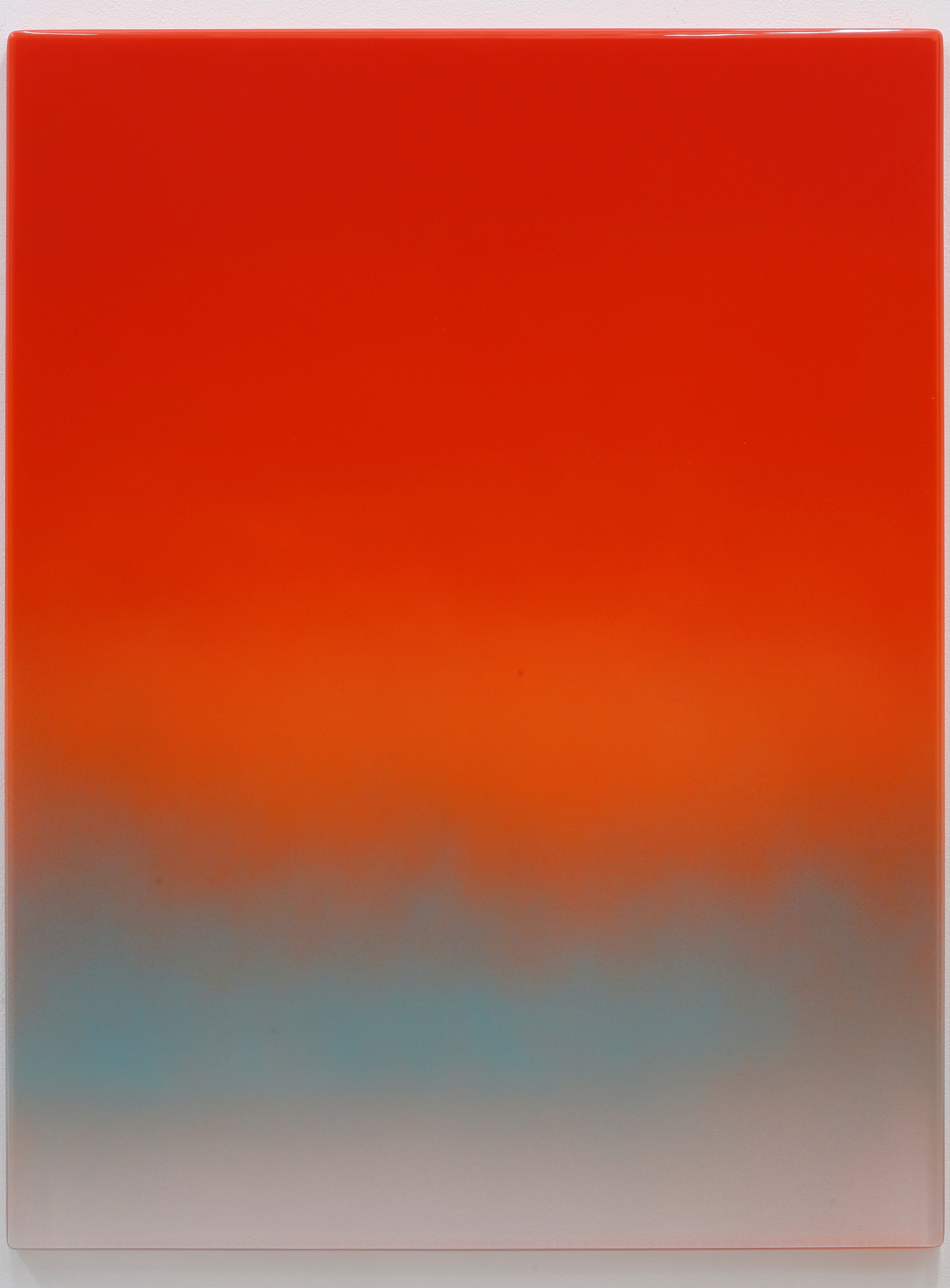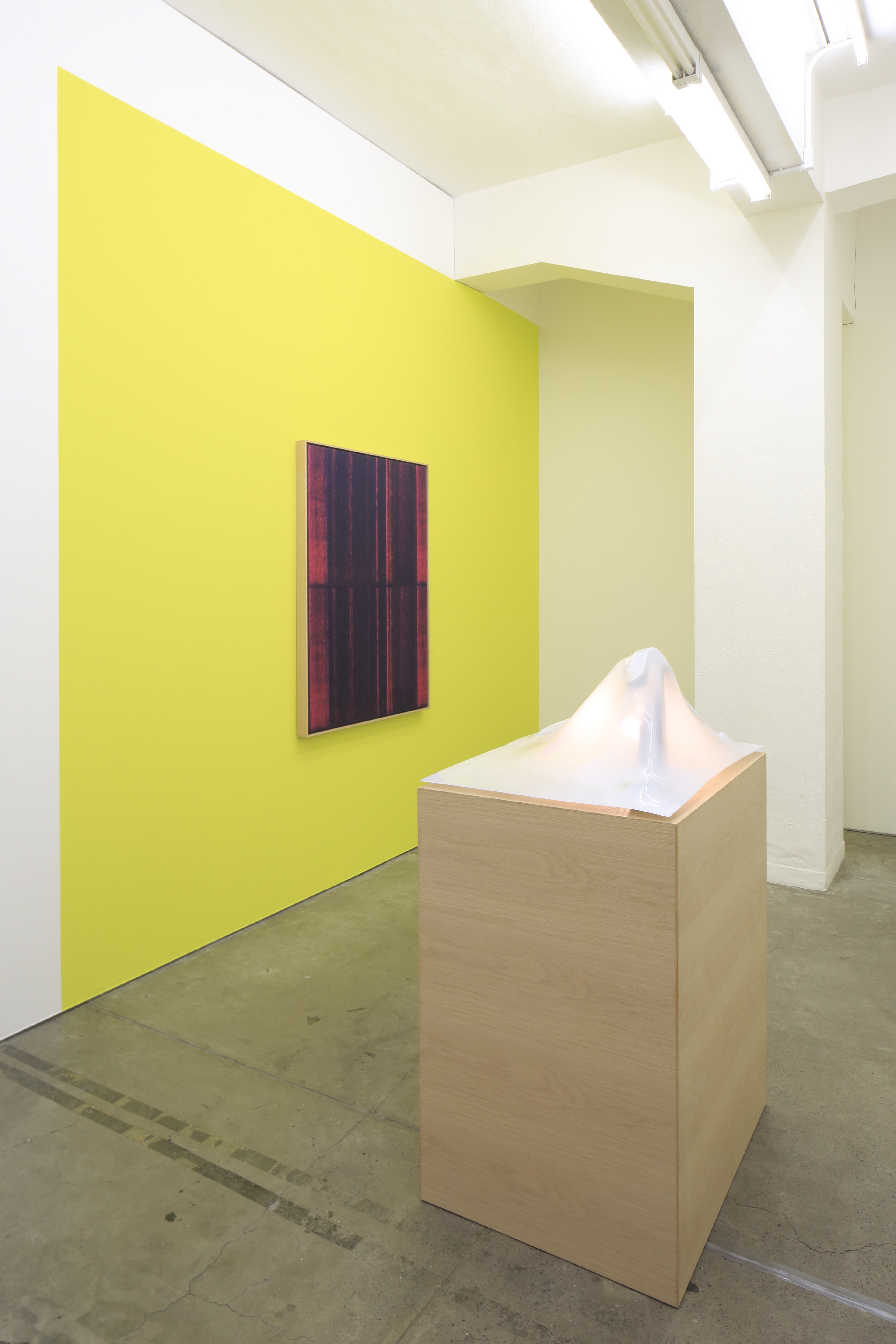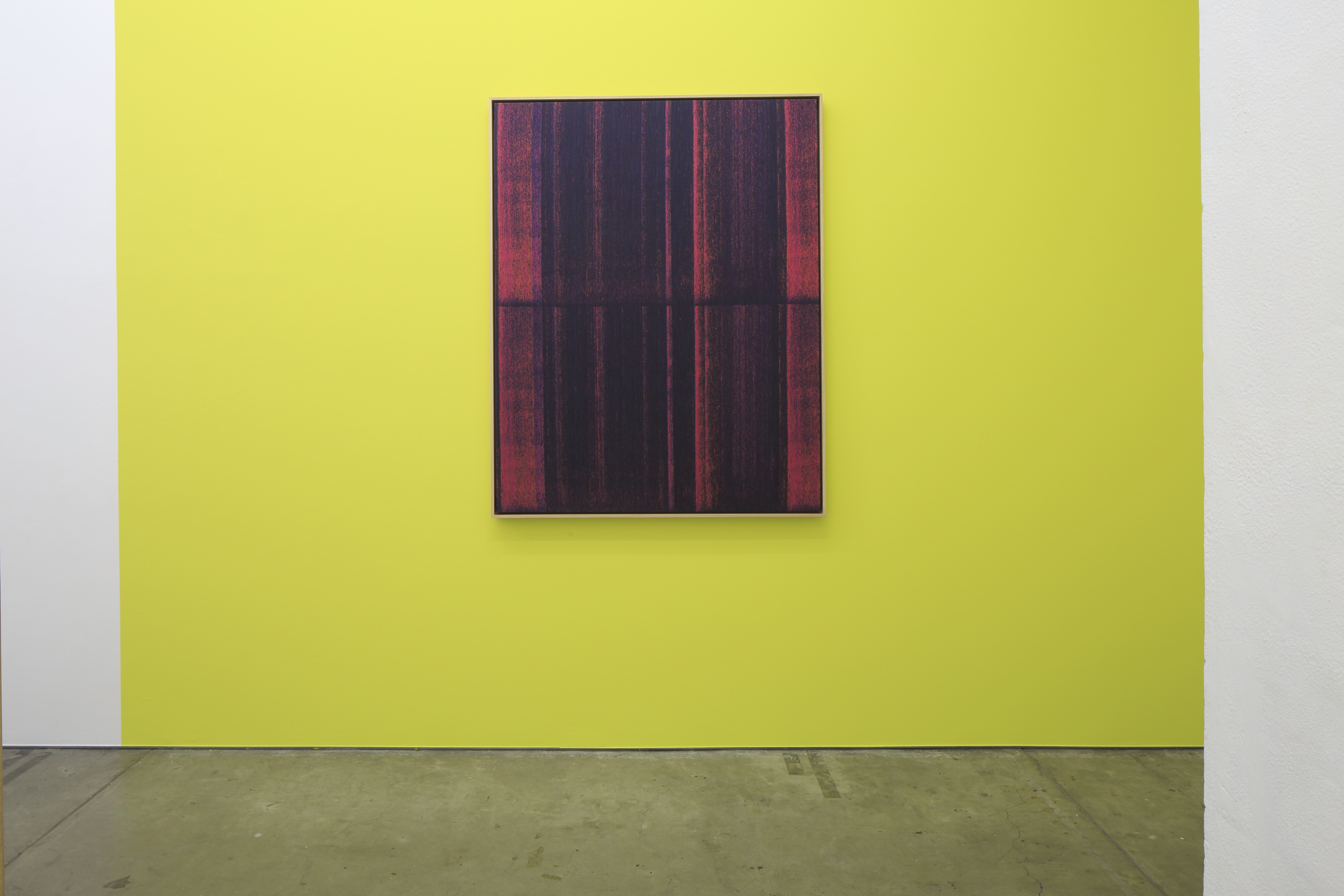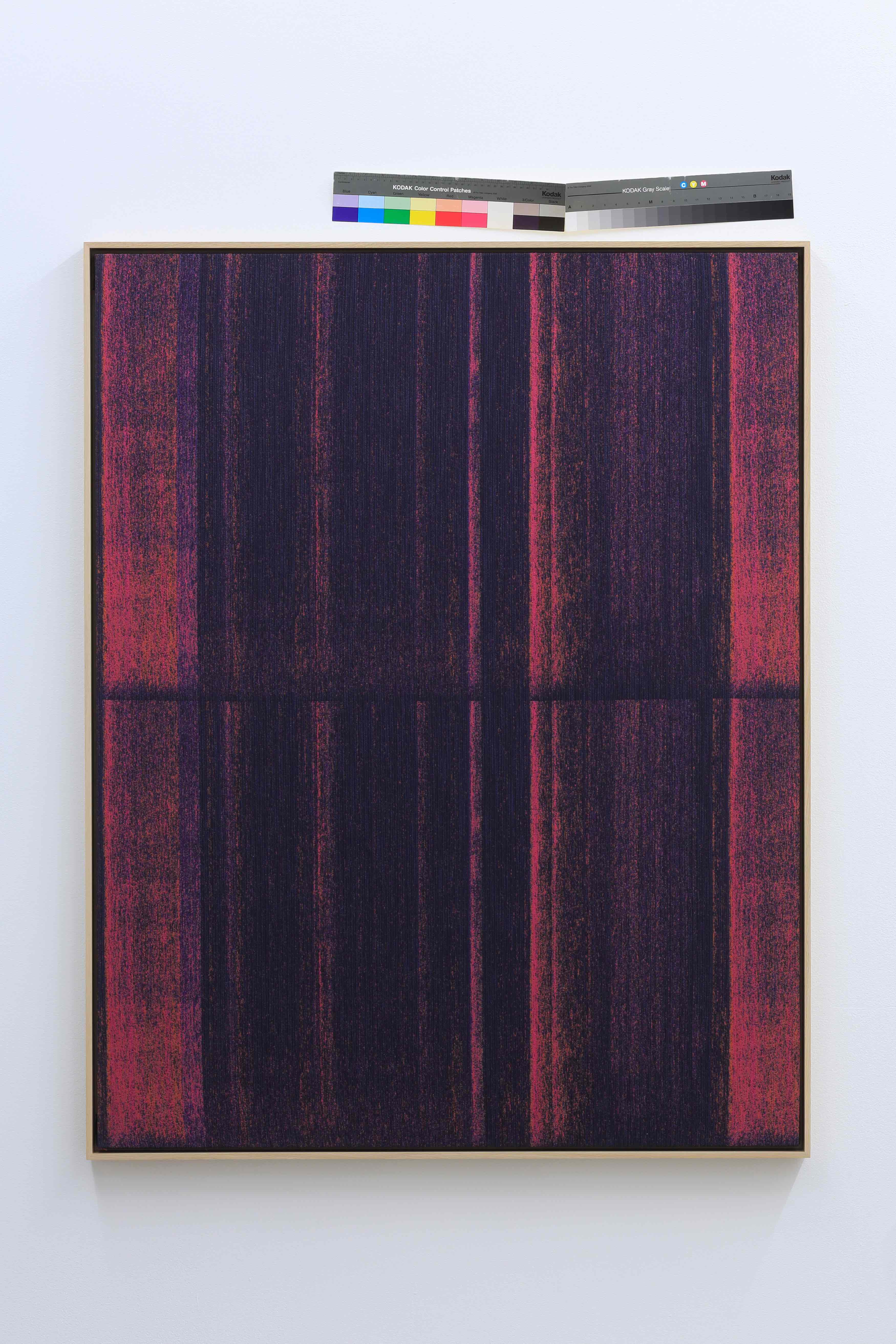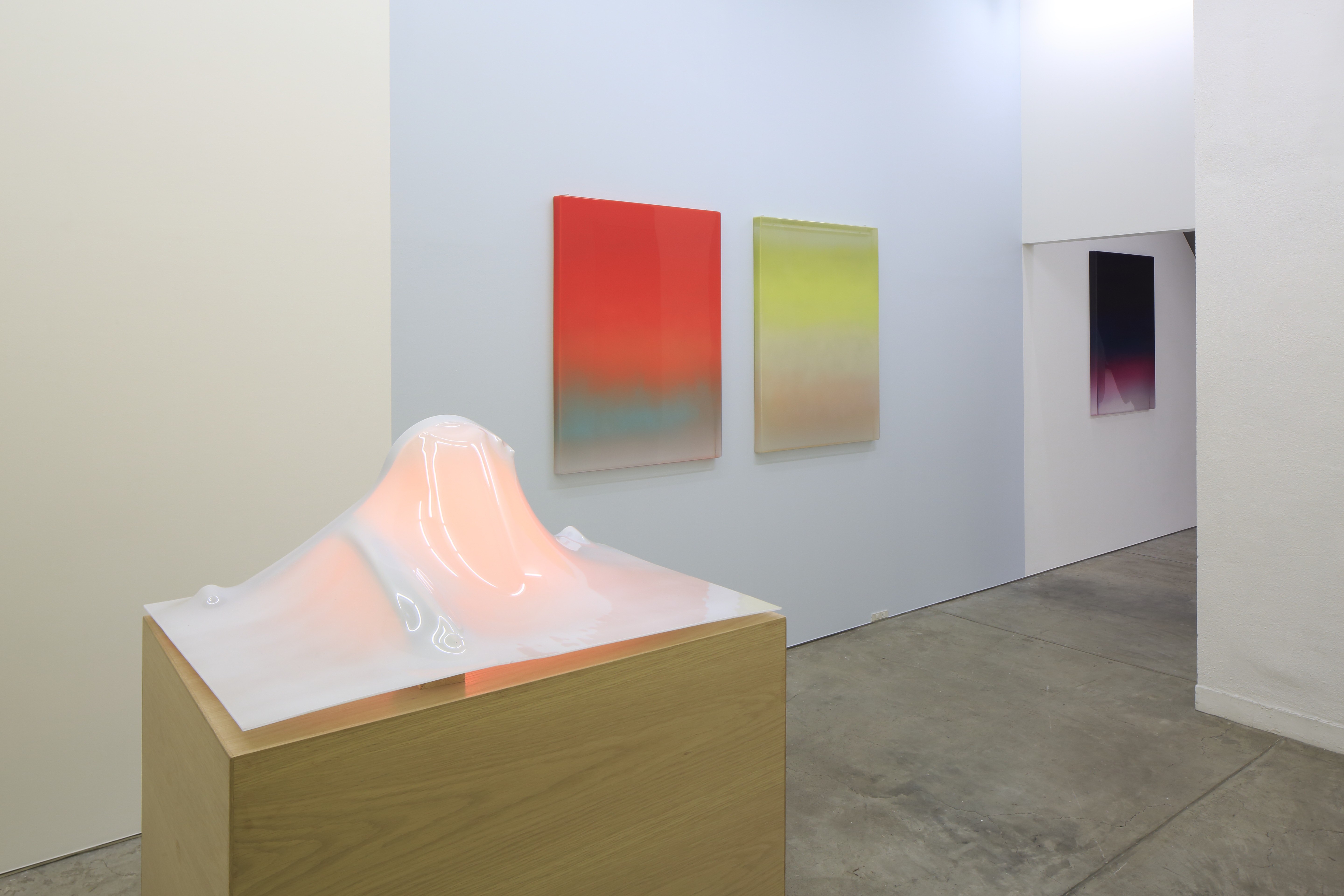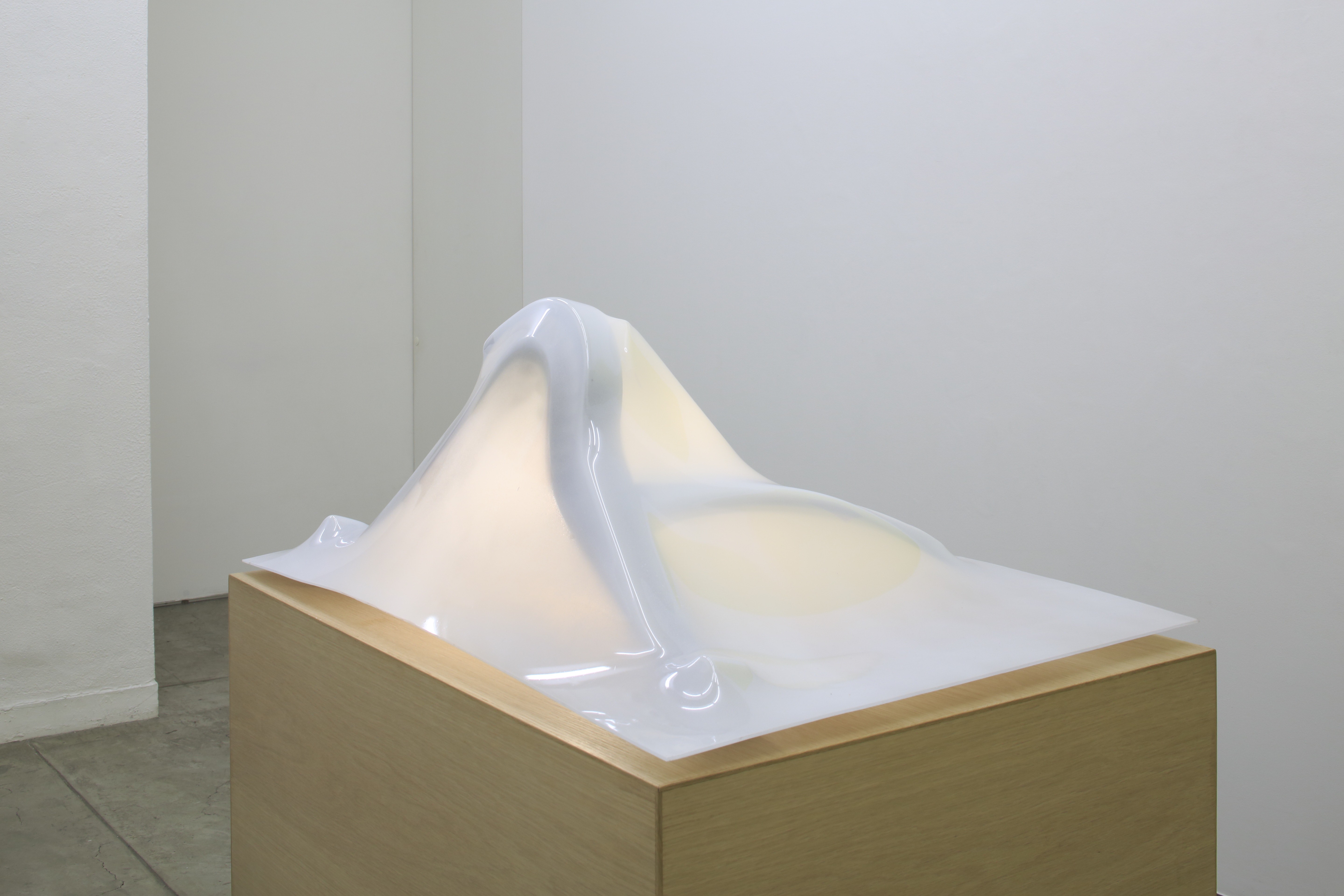TARO NASU is pleased to present the first solo show in Japan by Mika Tajima.
Mika Tajima
1975 born in Los Angeles, USA.
Lives and works in New York.
This is the first solo exhibition in Japan featuring new works from Tajima’s representative series of works “Negative Entropy” and “Furniture Art”, and the debut of her networked light sculptures. “Human Synth” focuses on the multiple industrial and digital modernities we simultaneously experience―one in which human body comes in tension with the machinic body.
Tajima investigates how the built environment (including information spaces) shape our bodily actions. Her recent work focuses on contemporary technologies developed to control and affect the body―techniques that shape bodily experience of time and space, taking the human body as a target of power. This exhibition focuses on the flow of productive life energies through specific sites in our global economic system. These are images of our embodied activities mediated through the processes of material translations, including its radical transmediation into a woven textile fabric.
The abstract Jacquard woven textile portraits that comprise Tajima’s “Negative Entropy” focuses on the historical and material texture of this history. The subjects of “Negative Entropy” have been factories that employ industrial textile Jacquard looms (precursors to digital technology) and computer data center sites that comprise the infrastructure of the information economy. Mediated through different processes and hands, these textile works are woven on an industrial Dornier Jacquard loom in deeply saturated cotton, polyester and rayon yarns. Jacquard looms are predecessors to modern day digital industrial technology and considered a prototype for algorithmic computing ―this connection further demonstrates the intertwining of the histories of textile and digital production.
“Human Synth” will feature a new series of large-scale abstract textile portraits made from field recordings of specific sites of production that are digitally transmuted into images and physically interpreted by a weaving designer into a Jacquard fabric. This exhibition presents “Negative Entropy” portraits of a data center, a car manufacturing plant, textile factories, and a selection of human “translators”.
The recordings of these works were made at several sites including Bally Ribbon Mills (a textiles factory in Bally, Pennsylvania), New York University Central Data Center (the global hub and infrastructure for the university’s information technology), Langhorne Carpet Company (a mill in Langhorne, Pennsylvania) and Toyota Motomachi Plant (a car manufacturing plant in Toyota City, Japan). New to the series are portraits of three different people involved in the process of translation―Kim Reddick, a Jacquard card cutter who translates visual images into proto-digital punched card instructions for looms; Joy Alaoui, a weaving designer who transmutes digital images to physical Jacquard weave patterns; and seminal art producer/curator Kazue Kobata, a leading Japanese translator of English language-based texts, including her extensive work on Susan Sontag’s writings.
Light sculptures on various pedestal structures throughout exhibition create different affective zones. The color of the lights respond in real time to the aggregate sentiment of people in distant cities, scraped from thousands of Twitter feeds per second using linguistic software technology designed to detect the intensity of human emotion. The lights pulse and radiate colors as it responds to the feed of information, powered by the affective energies of people around the world sharing tweets. The skeletal frame of the light sculpture is shaped from a deconstructed ergonomic chair, which uses the human spine as both its reference and a way to reform the performance of a body. A spray-enameled translucent acrylic skin is thermoformed over the armature frame, allowing the light to illuminate through its bodily form. A bio lamp.
Similar to Tajima’s “Furniture Art” series consisting of spray enameled transparent paintings each subtitled by a geographic location, these light sculptures reference two disparate cities, to source the color ‘material’ that fills its structure. Like much in contemporary life, the contents are phantasmagoric―a fleeting visual trace of a material life as it fades into abstraction, atomized and drawn into thin air.
